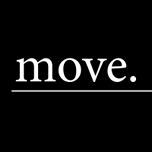Surgery may be indicated for severe conditions of the neck, such as if there is impact on the nerves causing substantial problems including pain, numbness or weakness in your neck or arms. This may be caused by trauma, infection, tumours, injury or degenerative disorders such as arthritis. It may be done as an emergency if there is trauma or severe injury, or electively as an alternative option if conservative measures have not sufficiently improved symptoms.
Treatment Options
The decision to undergo spinal surgery is often done in collaboration with your GP, Neurosurgeon, and physiotherapist, and is based on the severity of your symptoms, functional limitations and extensive investigations. At times it may be necessary to complete a period of conservative management or trial injections before surgery is considered.
Your doctors and physiotherapist can provide basic exercises to assist with optimising strength and movement both before and after surgery. These exercises are personalised to suit your individual circumstances, goals, function and type of surgery.
Common Types of Cervical Spine Surgery
Anterior Cervical Discectomy and Fusion
During this surgery your neurosurgeon will access the area through the front of your neck. The affected disc is removed with adjacent bone to take the pressure off the nerves. The neck bones are then joined (fused) to stabilise the area.
Cervical Disc Arthroplasty
This is a procedure which involves removal of one or more of the discs in your spine that has been injured, and replacing it with an artificial spinal disc. The replacement disc aims to act like the natural disc, allowing movement in many directions and compression of force. This procedure may be done if there is not extensive injury affecting multiple structures of the neck.
Anterior Cervical Corpectomy
This procedure is also performed by access at the front of the neck, and consists of the removal of the vertebrae (with or without the accompanying disc) that are damaged and causing symptoms. It is more extensive than a discectomy, as it removes the body of the vertebrae in addition to the disc, and also requires a spinal fusion for stability.
Posterior Cervical Foraminotomy
This procedure is done by access at the back of the neck, and consists of removing parts of the bone, joint and soft tissues that cause compression on the spinal nerve. Recovery is usually faster as there is no fusion, and it preserves the movement of the neck.
Posterior Cervical Laminectomy – With or Without Fusion
This procedure is also done by access at the back of the neck, and consists of removing part of the bone (lamina) which is compressing the nerve. A fusion may also be performed, which consists of joining two or more segments of the spine together to ensure stability.
After Surgery
Length of stay in hospital varies from two days to a week or more. Physiotherapy post-operatively varies significantly depending on the type of surgery you have. You may need to wear a hard or soft collar and movement restricted, or you may be allowed to use your neck as normal. Either way you will generally be seen the day after surgery and will be educated regarding things to avoid, what exercises and activities are safe and to make sure you are able to mobilise and care for yourself as usual. Your doctor will ensure pain relief is adequate. Once discharged from hospital your physiotherapist can progress and monitor your exercises and activity levels. It is not uncommon for full recovery to take 6 months or longer. Information and advice can be given regarding safe return to exercise, work or recreation, and reduce the risk of re-injury.
Advice
If you’re planning on spinal surgery, be sure to maintain open discussion with the health professionals involved in your care. Extensive consideration should be given to the potential risks and benefits.
Need More Information?
If you’d like to discuss your health or upcoming surgery with any of our allied health staff, you can:
- Call us on (08) 8373 5655
- Use our Online Booking Gateway (available 24/7) to choose your appointment time
- Drop in to see us in person
- Email us on info@moveforbetterhealth.com.au




